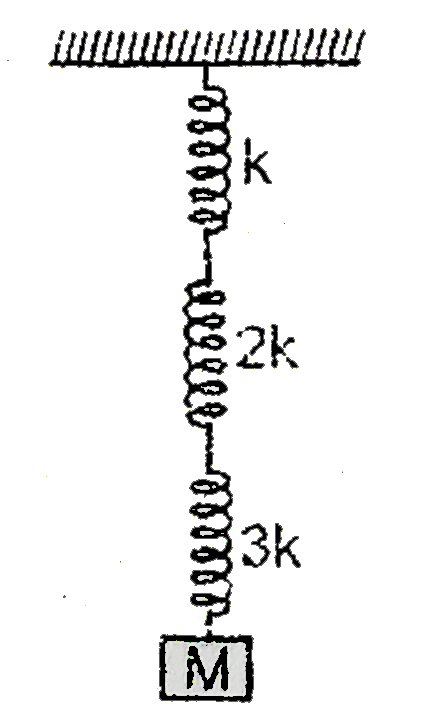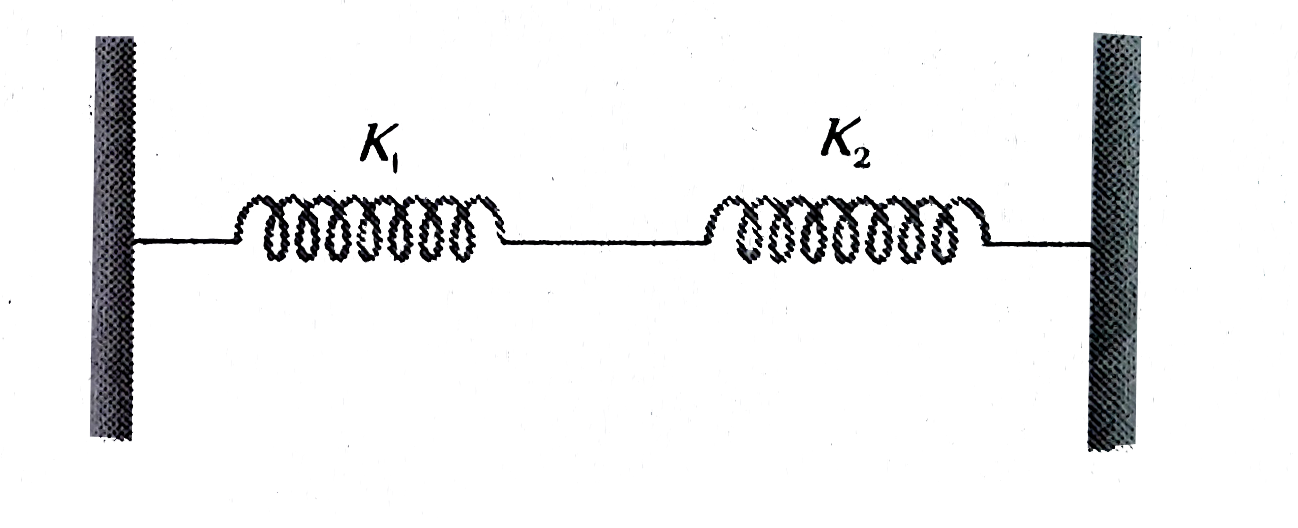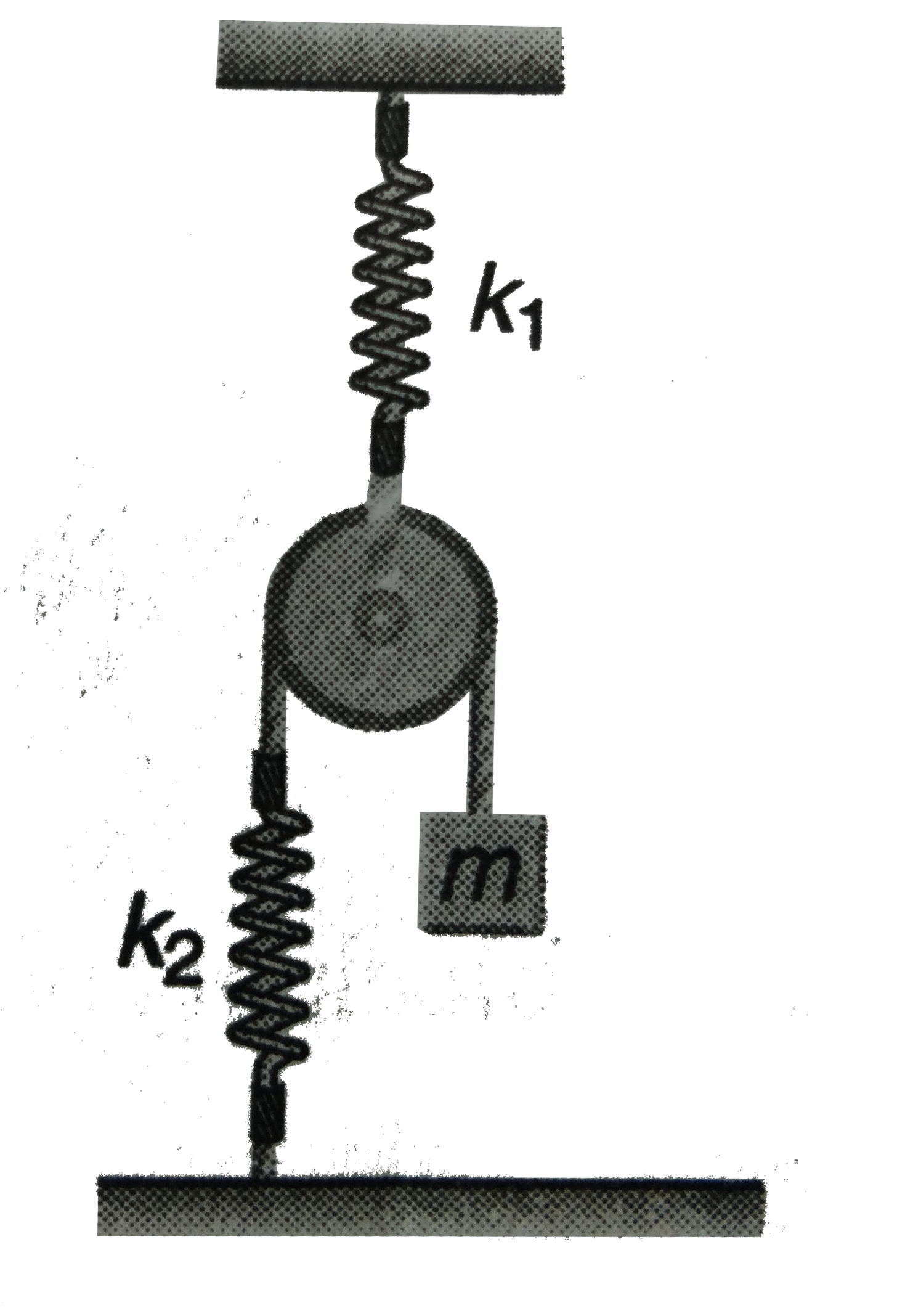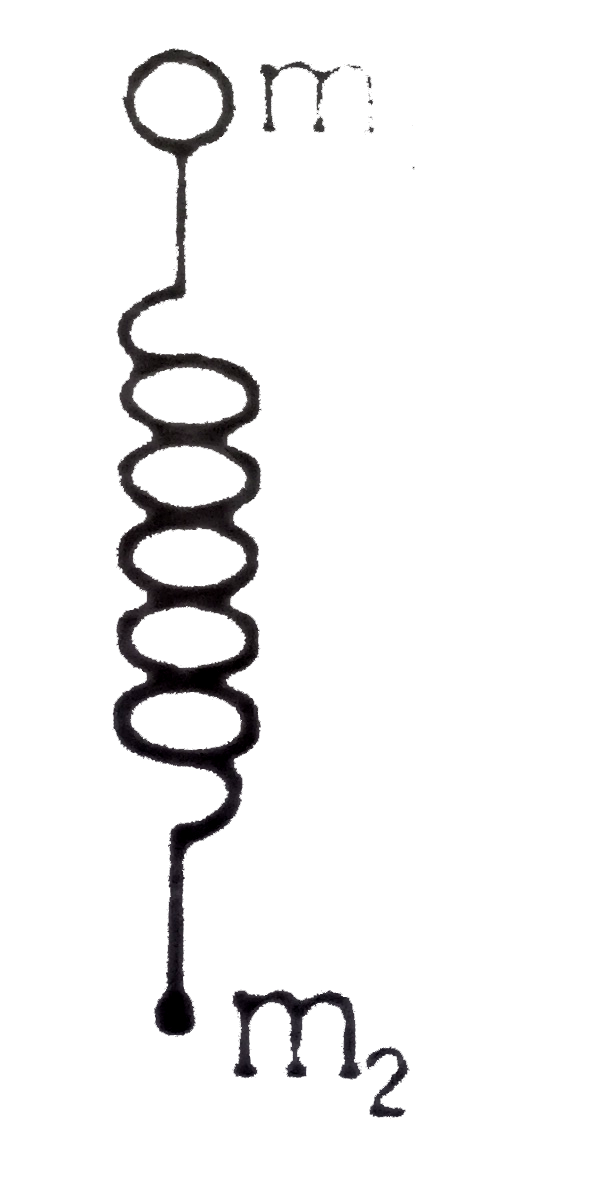Two springs are joined and attached to a mass of 16 kg. The system is then suspended vertically from a rigid support. The spring constant of the two spring are k1andk2 respectively. The period of vertical oscillations of the system will be
8π√k1+k2k1k2
π2√k1k2
√k1+k28π
π√k1−k22
The correct Answer is:A
To solve the problem of finding the period of vertical oscillations of a mass attached to two springs connected in series, we can follow these steps:
Step 1: Understand the Configuration
We have two springs with spring constants k1 and k2 connected in series to a mass m=16kg.
Step 2: Determine the Equivalent Spring Constant
When springs are connected in series, the equivalent spring constant kequiv can be calculated using the formula:
1kequiv=1k1+1k2
This can be rearranged to:
kequiv=k1k2k1+k2
Step 3: Write the Formula for the Period of Oscillation
The period T of a mass-spring system is given by the formula:
T=2π√mkequiv
Step 4: Substitute the Equivalent Spring Constant
Substituting kequiv into the period formula, we have:
T=2π
⎷mk1k2k1+k2
This simplifies to:
T=2π√m(k1+k2)k1k2
Step 5: Substitute the Mass Value
Now, substituting the mass m=16kg:
T=2π√16(k1+k2)k1k2
Step 6: Final Simplification
We can factor out the 16:
T=4π√k1+k2k1k2
Final Answer
Thus, the period of vertical oscillations of the system is:
T=4π√k1+k2k1k2
We have two springs with spring constants k1 and k2 connected in series to a mass m=16kg.
When springs are connected in series, the equivalent spring constant kequiv can be calculated using the formula:
1kequiv=1k1+1k2
This can be rearranged to:
kequiv=k1k2k1+k2
The period T of a mass-spring system is given by the formula:
T=2π√mkequiv
Substituting kequiv into the period formula, we have:
T=2π
⎷mk1k2k1+k2
This simplifies to:
T=2π√m(k1+k2)k1k2
Now, substituting the mass m=16kg:
T=2π√16(k1+k2)k1k2
We can factor out the 16:
T=4π√k1+k2k1k2
Thus, the period of vertical oscillations of the system is:
T=4π√k1+k2k1k2
Similar Questions
Spring mass system is shown in figure. find the time period of vertical oscillations. The system is in vertical plane.

View SolutionFind the period of a vertical spring - block system by both methods.
View SolutionThe effective spring constant of two spring system as shown in figure will be

View SolutionA mass m is suspended from the two coupled springs connected in series. The force constant for springs are k1 and k2. The time period of the suspended mass will be
View SolutionTwo particles (A) and (B) of equal masses are suspended from two massless spring of spring of spring constant k1 and k2, respectively, the ratio of amplitude of (A) and (B) is.
View SolutionA block of mass m suspended from a spring of spring constant k. Find the amplitude of S.H.M.
View SolutionA light pulley is suspended at the lower end of a spring of constant k1, as shown in figure. An inextensible string passes over the pulley. At one end of string a mass m is suspended, the other end of the string is attached to another spring of constant k2. The other ends of both the springs are attached to rigid supports, as shown. Neglecting masses of springs and any friction, find the time period of small oscillations of mass m about equilibrium position.

View SolutionThe two masses m1 and m2 are joined by a spring as shown. The system is dropped to the ground from a height. The spring will be

View SolutionA block of known mass is suspended from a fixed support through a ligh spring. Can you find the time period of vertical oscillation only by measuring the extension of the spring when the block is in equilibrium?
View SolutionA block of mass m hangs from three springs having same spring constant k. If the mass is slightly displaced downwards, the time period of oscillation will be

View Solution
